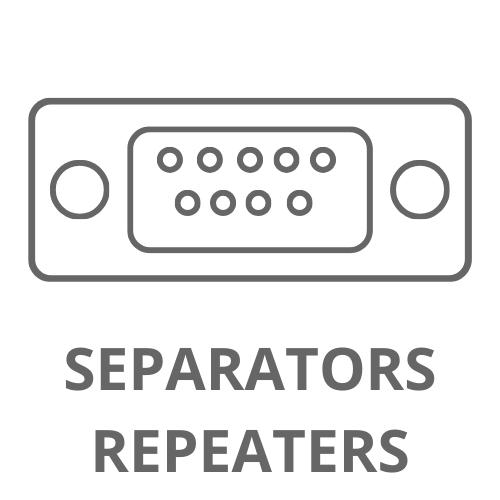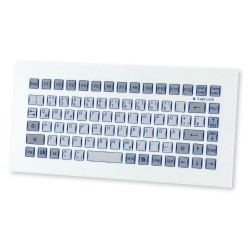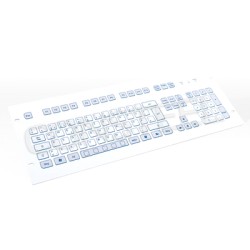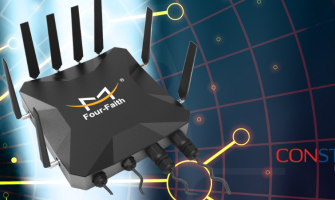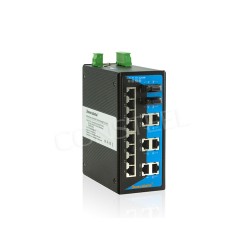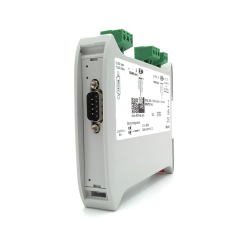What is the difference between a mechanical keyboard and a membrane keyboard?
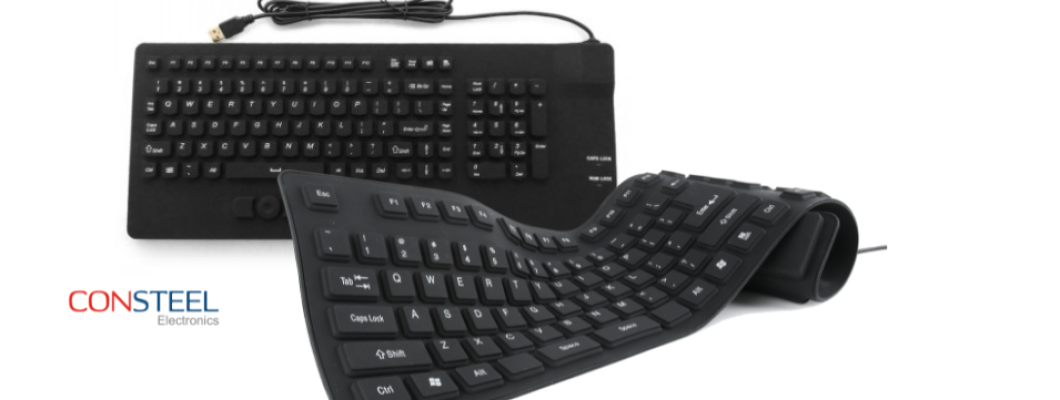
In the world of computer peripherals, keyboards are an essential tool for everyday tasks, whether it's writing emails, writing code, or gaming. The two most popular types of keyboards are mechanical keyboards and membrane keyboards. Understanding the differences between the two types can help users make informed decisions based on their specific needs and preferences. In the text below, you'll learn about the basic differences between mechanical and membrane keyboards, including their design, performance, durability, cost, and ideal use cases.
Keyboard types
Keyboards can be broadly divided into two main types: mechanical and membrane. Each type has its own unique design and operational features that affect how it feels and how it performs.
Klawiatury mechaniczne
Mechanical keyboards use individual mechanical switches for each key. These switches are made up of several moving parts, including a hard plastic pin, a spring underneath, and electrical contacts. When you press a key, the switch activates and sends a signal to the computer.
Membrane keyboards
In turn, membrane keyboards use a different mechanism. They consist of three layers: the upper layer of the membrane with conductive paths, the middle layer acting as a spacer, and the lower layer of the membrane also with conductive paths. When a key is pressed, the top layer of the membrane moves down to meet the bottom layer, completing the circuit and sending a signal to the computer.
Construction and design differences between membrane and mechanical keyboards
The structure and design of mechanical and membrane keyboards are fundamentally different, leading to different performance characteristics and user experiences.
Mechanical keyboards: types and design of switches
Mechanical keyboards are defined by their switches. There are several types of mechanical switches, each offering a unique experience and performance.
- Cherry MX switches: One of the most popular types of Cherry MX switches comes in a variety of colors, each representing a different tactile feel and actuation force. For example, Cherry MX Red switches are linear and require less force to actuate, while Cherry MX Blue switches are tactile and clicky.
- Other switch brands: Other manufacturers such as Razer, Logitech, and SteelSeries produce their own mechanical switches with unique features. These switches often mimic or are based on the design of Cherry MX switches.
- Customization and modularity: Mechanical keyboards often feature modularity, allowing users to replace switches, keycaps, and other components according to their preferences.
Membrane keyboards: simplicity and cost-effectiveness
Membrane keyboards have a simpler design compared to mechanical keyboards.
- Layered construction: Membrane keyboards use a sandwich-like structure composed of three thin layers. The top and bottom layers contain conductive paths, while the middle layer acts as a spacer.
- Membrane keyboards with dome switch: A common variation is the dome-switch membrane keyboard, which contains rubber or silicone domes under each key. When a key is pressed, the dome collapses, making contact with the conductive paths and transmitting a signal.
- Integrated design: Membrane keyboards are typically more compact and less customizable due to their integrated design.
Performance and typing experience
The performance and typing comfort of mechanical and membrane keyboards vary significantly due to their different designs and actuation mechanisms.
Mechanical keyboards: precision and tactile feedback
Mechanical keyboards are known for their precise and consistent performance, making them a favorite among enthusiasts and professionals.
- Activation force and travel distance: Mechanical switches have a clear actuation point and a longer travel distance compared to membrane keys. This allows for more precise writing and better feedback.
- Tactile and audio feedback: many mechanical switches provide tactile and audio feedback that can improve typing comfort. The clicking sound of some switches, such as the Cherry MX Blues, is satisfying for many users.
- N-Key Rollover and Anti-Ghosting: Mechanical keyboards often feature N-Key Rollover and anti-ghosting, allowing you to press multiple keys simultaneously without losing any input. This is especially beneficial for gamers.
Membrane keyboards: quiet and soft typing
Membrane keyboards provide a different typing experience that may be preferred in some environments.
- Quiet operation:Membrane keyboards are generally quieter than mechanical keyboards, making them suitable for shared or quiet spaces.
- Softness and cushioning:The rubber dome provides a softer, cushioned feeling when typing, which some users find more comfortable during long typing sessions.
- Variable response to key press: Keyboard membranes can sometimes respond to keystrokes inconsistently, especially as the membrane layers age and wear out.
Durability and longevity of membrane and mechanical keyboards
Keyboard durability and lifespan are important factors to consider, especially for users who type frequently, use keyboards in industrial environments, or rely on a gaming keyboard.
Mechanical Keyboards: Built to last
Mechanical keyboards are famous for their durability and longevity.
- Switch life: Mechanical switches can withstand tens of millions of keystrokes. For example, Cherry MX switches are typically rated for 50 million keystrokes.
- Solid construction: The solid construction of the mechanical switches and keyboard housing increases their overall durability. High-quality materials such as metal backplates and PBT keycaps increase durability.
- Easy maintenance:Mechanical keyboards are easier to clean and maintain. In case of failure, individual switches can be replaced, which extends the life of the keyboard.
Membrane keyboards: Inexpensive, but less durable
Membrane keyboards, although inexpensive, tend to have a shorter lifespan compared to mechanical keyboards.
- Membrane wear: The rubber domes in membrane keyboards can deteriorate over time, leading to poor key response and a mushy feeling. Membrane layers can also wear out, especially with heavy use.
- Limited service life: Membrane keyboards are typically rated for fewer keystrokes than mechanical keyboards, often around 5 to 10 million keystrokes.
- Less repairs: When a membrane keyboard fails, it is usually more cost-effective to replace the entire keyboard rather than attempt repairs.
Cost and value of mechanical and membrane keyboards
Prices and values for mechanical and membrane keyboards vary, and each type offers different benefits at different price points.
Mechanical keyboards: higher initial investment
Mechanical keyboards typically have a higher initial cost, but offer long-term value due to their durability and performance.
- Premium prices: High-quality mechanical keyboards can be expensive, with prices ranging from $70 to over $200, depending on brand, switch type, and features.
- Long-term value: durability and possibility Mechanical keyboard customizations can provide long-term value, making them a worthwhile investment for enthusiasts, professionals and gamers.
- Customization options: Ability to customize keys , switches and other components allow users to customize a mechanical keyboard to their preferences, increasing its perceived value.
Membrane keyboards: affordable options
Membrane keyboards are usually cheaper and offer good quality for users with basic typing needs .
- Lower cost: Membrane keyboards are generally cheaper, and their prices range from several dozen to a thousand zlotys, making them available to budget-conscious consumers.
- Sufficient for everyday use: W for users who have basic typing requirements or occasionally use membrane keyboards, which can provide adequate performance at a lower cost.
- Limited customization: Integrated design and the limited customization options of membrane keyboards may not appeal to enthusiasts, but are sufficient for general use.
Ideal use cases for mechanical and membrane keyboards
The choice between a mechanical or membrane keyboard often depends on your specific use case and preferences user.
Mechanical keyboards: ideal for typing, programming , playing and using in demanding environments.
Mechanical keyboards are perfect for tasks requiring precision, speed and durability.
- Writing and programming: Touch feedback the agile, precise actuation and durability of mechanical keyboards make them ideal for programmers who spend long hours at the keyboard.
- Games: Players use the fast response time, N-key rollover and anti-ghosting features available in mechanical keyboards. Customizable switches and keycaps also allow gamers to optimize their setup for different game genres.
- Industrial environment: quality is appreciated damage resistance, customization options and exceptional precision when typing on a mechanical keyboard.
Membrane keyboards: suitable for general and quiet environments
Membrane keyboards are a practical choice for general purpose applications and environments where there is quiet operation.
- Office and shared spaces Quieter operation Membrane keyboards make them suitable for office environments and shared spaces where noise may be an issue.
- Regular users For regular users, who use keyboards mainly for basic tasks such as web browsing, emailing and simple typing, membrane keyboards provide an affordable and sufficient solution.
- Portable and compact designs: Keyboards membrane are often available in kocompact and portable designs, making them convenient for users who need a lightweight and travel-friendly keyboard.
Advances and innovations
Both mechanical and membrane keyboards have seen improvements and innovations aimed at to improve the comfort of use and expand functionality.
Mechanical keyboards: innovations and trends
Mechanical keyboards are constantly evolving with new technologies and design improvements.
- Optical and Hall effect switches: Innovations such as optical and Hall effect switches provide faster response times and greater durability by using light or magnetic fields to actuate keys instead of physical contacts.
- Wireless mechanical keyboards: Progress in wireless technology has led to the development of wireless mechanical keyboards, providing the benefits of mechanical switches with the convenience of wireless connectivity.
- RGB lighting and software customization: RGB lighting and software customization options allow users to personalize the keyboard's appearance and functionality, improving the user experience.
Membrane keyboards: improvements and features
Although membrane keyboards have a simpler design, they also feature improvements to improve performance and user satisfaction.
- Scissor switch mechanism: Keyboards with scissor switch, commonly found on laptops, provide more stable and responsive typing compared to traditional membrane keyboards.
- Ergonomic design: Ergonomic membrane keyboards They have a split layout, adjustable angles and wrist rests that ensure comfortable typing and reduce fatigue.
- Water and dust resistance: Some membrane keyboards are water and dust resistant, making them more durable and suitable for use in harsh environments.
Environmental impact and sustainability
The environmental impact and sustainability of mechanical and membrane keyboards are important issues, especially as consumers become more and more aware of their ecological footprint.
Mechanical keyboards: durability and sustainability
Mechanical keyboards, thanks to their solid construction and long life, can contribute to sustainable development in several ways.
Length: The long life of mechanical keyboards reduces replacement frequency, which leads to less electronic waste.
Repairability: modularity and repairability Mechanical keyboards allow users to replace individual components instead of throwing away the entire keyboard.
Recyclable materials: many high-quality mechanical keyboards use metal backplates and other recyclable materials, which contributes to sustainability.
Membrane keyboards: affordability and recycling challenges
Membrane keyboards, while inexpensive, pose various sustainability challenges.
Shorter lifespan: Shorter lifespan of membrane keyboards leads to more frequent replacements and more electronic waste.
Non-recyclable components: Integrated the design and use of non-recyclable materials in many membrane keyboards makes them more difficult to recycle.
Profitable production: Lower cost and ease production of membrane keyboards may result in higher production and disposal volumes.
Difference between mechanical keyboard and a membrane keyboard - the right choice
The choice between a mechanical or membrane keyboard ultimately depends on your specific needs, preferences and user budget. Understanding what is the difference between a mechanical keyboard and a membrane keyboard can help users make informed decisions.
Mechanical keyboards: precision and personalization
Mechanical keyboards provide precision, tactile feedback and durability, making them perfect for developers, gamers and professionals who value performance and personalization.
Pros: Durable, customizable, precise writing, great for gaming and programming.
Cons: higher cost, noisier operation , larger structure.
Membrane keyboards: affordable price and quiet operation
Membrane keyboards provide quieter typing and are cheaper, making them suitable for everyday users, office environments and budget-conscious consumers.
Pros: Inexpensive, quiet operation, compact and portable design.
Cons: Shorter lifespan, less responsive typing, limited customization.
Both mechanical and membrane keyboards have their unique strengths and weaknesses . By considering factors such as typing feel, durability, noise level, and budget, users can choose the keyboard that best suits their needs. Whether you choose the robust and customizable mechanical keyboard or the affordable and quiet operation of a membrane keyboard, understanding these differences ensures that the keyboard you choose will increase your productivity and satisfaction in everyday tasks.












